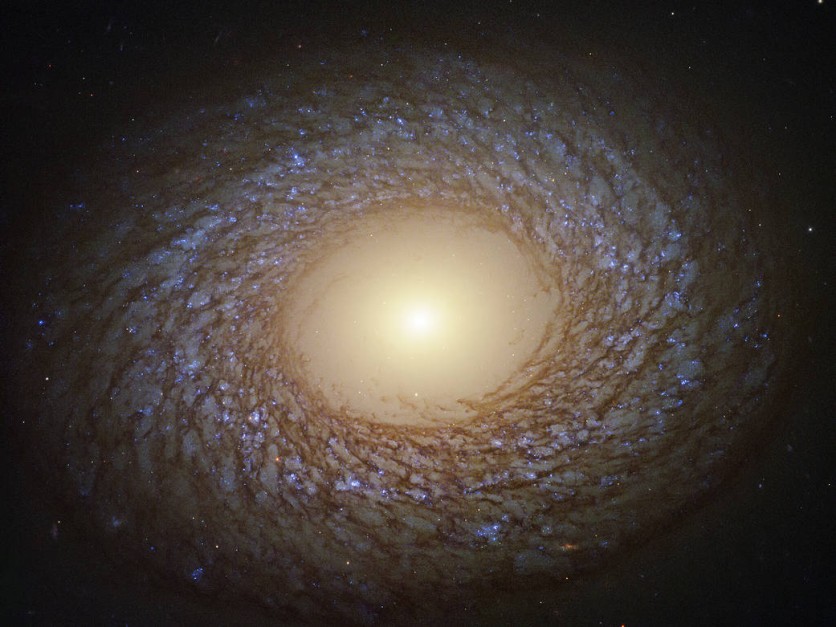A new image was published by the European Space Agency (ESA) and NASA using the Hubble Space Telescope. It provided a very detailed look at the unusual spiral galaxy known as NGC 2775.

The ESA identified this galaxy as a flocculent, meaning NGC 2775 has a woolly, feathery, or fluffy appearance with the arms spiraling out of its core, looking like it's made of dog fur.
According to the ESA, these fluffy arms indicate that this galaxy hasn't had anything in star formation for a very long time. The arms are made of gas clouds that were dispersed by the galaxy's rotation.
What does it look like?
The new image from NASA's Hubble Space Telescope reveals, at first sight, the sparkling stars of AGC111977, a dwarf galaxy about 15 million light-years away and visible in the lower-left portion of the picture. Many galaxies, together with the foreground stars from our Milky Way galaxy, appear scattered around the picture.

A closer inspection does, however, award two surprising inclusions from far closer to home. Two elongated streaks are faintly visible in the bottom right corner of the photo.
Space experts have identified NGC 2775 as the paths of asteroids traversing their routes in the foreground of stars and galaxies under Hubble's observation.
Throughout the observation, as the asteroids traveled relative to Hubble, all trails were pictured in each filter, and thus appear red and part blue.
The two asteroids are located at different distances from us, so their intersecting streaks might suggest that they did not actually collide.
How did they discover them?
Amateur astronomers Sovan Acharya, Graeme Aitken, Claude Cornen, Abe Hoekstra and Edmund Perozzi have discovered them.
As part of the Hubble Asteroid Hunter citizens' research initiative, these volunteers were reviewing pictures from the orbiting space telescope in search of rocky interlopers.
The Hubble Asteroid Hunter was launched a year ago on International Asteroid Day 2019, and is a partnership between the European Space Agency ( ESA) and the Zooniverse.
The project has invited the public to classify asteroids that the Hubble Space Telescope observed serendipitously.
Around 9,000 people subsequently submitted 2 million classifications of 140,000 Hubble composite images, discovering 1,500 new spatial rock trails.
In the first phase of the project, volunteers may explore a collection of archival Hubble images in which calculations by ESASky's Solar System Objects system, ESA's astronomy discovery platform, indicate that an asteroid may have entered the field of view of the space telescope at the time of the observations.
In addition to asteroids, the volunteers have also found traces higher than Hubble's left by satellites in orbits, interesting instances of gravitational lensing, and ring-shaped features that occur when galaxies collide.
During the last few months, the project experienced an increase in participation. Many people around the world remained at home due to the coronavirus pandemic.
It leads to the number of classifications being tripled up. This citizen science project is now near completion due to the volunteers' continued efforts, with only the infrared photos remaining to be explored.
The team is classifying the asteroids as part of the project - including the two captured in this picture. They will align their photos with identified asteroids in the Minor Planet Center database and measure their distances from us.
The stunning asteroid image coincides with another striking picture of Hubble being published. That shows the spiral pattern formed by the "delicate, feathery design" of a galaxy.
This spiral 'flocculent' arms suggest that the galaxy's recent star formation, known as NGC 2775, has been relatively quiet. In the central part of the universe, there is virtually no star formation. It is dominated by an unusually large and relatively empty galactic bulge, where all of the gas was converted into stars long ago.
ⓒ 2025 TECHTIMES.com All rights reserved. Do not reproduce without permission.




